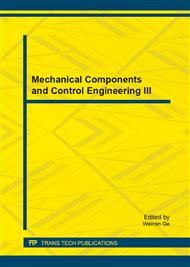[1]
J.I. Tobón, J. Paya, M.V. Borrachero, et al, Determination of the optimum parameters in the high resolution thermogravimetric analysis (HRTG) for cementitious materials, J. Therm. Anal. Calorim Vol. 107 (2012) , pp.233-239.
DOI: 10.1007/s10973-010-0997-0
Google Scholar
[2]
Q. Zhang, Y. Guang, Dehydration kinetics of Portland cement paste at high temperature. J. Therm. Anal. Calorim Vol. 110 (2012) , pp.153-158.
DOI: 10.1007/s10973-012-2303-9
Google Scholar
[3]
B. Pacewska, I. Wilińska, M. Bukowska, et al, An attempt to improve the pozzolanic activity of waste aluminosilicate catalyst. J. Therm. Anal. Calorim Vol. 77 (2004) , pp.133-142.
DOI: 10.1023/b:jtan.0000033196.30760.af
Google Scholar
[4]
J.A. Melo Filho, F.A. Silva, R.D. Toledo Filho, et al, Degradation kinetics and aging mechanisms on sisal fiber cement composite systems. Cem. Concr. Compos. Vol. 40 (2013) , pp.30-39.
DOI: 10.1016/j.cemconcomp.2013.04.003
Google Scholar
[5]
J. Payá, J. Monzó, M.V. Borrachero, et al, Evaluation of the pozzolanic activity of fluid catalytic cracking catalyst residue (FC3R). Thermogravimetric analysis studies on FC3R-Portland cement pastes. Cem. Concr. Res. Vol. 33 (2003) , pp.603-609.
DOI: 10.1016/s0008-8846(02)01026-8
Google Scholar
[6]
L. Alarcon-Ruiz, G. Platret, E. Massieu, et al, The use of thermal analysis in assessing the effect of temperature on a cement paste. Cem. Concr. Res. Vol. 35 (2005) , pp.609-613.
DOI: 10.1016/j.cemconres.2004.06.015
Google Scholar
[7]
A. Neves Junior, R.D. Toledo Filho, E.M.R. Fairbairn, et al, Early stages hydration of high initial strength Portland cement.J. Therm. Anal. Calorim Vol. 108 (2012) , pp.725-731.
DOI: 10.1007/s10973-012-2256-z
Google Scholar
[8]
I. Galan, C. Andrade, M. Castellote, Thermogravimetrical analysis for monitoring carbonation of cementitious materials. J. Therm. Anal. Calorim Vol. 110 (2012) , pp.309-319.
DOI: 10.1007/s10973-012-2466-4
Google Scholar
[9]
F.C. Knopf, A. Roy, H.A. Samrow, et al, High-pressure molding and carbonation of cementitious materials. Ind. Eng. Chem. Res. Vol. 38 (1999) , pp.2641-2649.
DOI: 10.1021/ie980705y
Google Scholar


